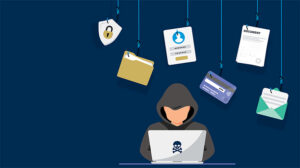What is spam ? How to prevent it
Spam is a type of commercial advertising that is financially viable since email is a low-cost medium for the sender. If only a portion of the recipients of a spam message buy the promised product, the spammers profit and the spam issue persists. Spammers obtain recipient addresses from publicly available sources, utilise web-based programmes to collect addresses, and simply employ dictionaries to generate automated guesses about popular usernames for a particular domain.
 Spam is a relatively new concern, yet it has a long history. Gary Thuerk, an employee of the now-defunct Digital Equipment Corp. (DEC), sent out the first spam email in 1978 to advertise a new product. The unwanted email was sent to around 400 of the 2,600 persons who used email on the Advanced Research Projects Agency Network. According to some sources, it resulted in around $12 million in new sales for DEC.
Spam is a relatively new concern, yet it has a long history. Gary Thuerk, an employee of the now-defunct Digital Equipment Corp. (DEC), sent out the first spam email in 1978 to advertise a new product. The unwanted email was sent to around 400 of the 2,600 persons who used email on the Advanced Research Projects Agency Network. According to some sources, it resulted in around $12 million in new sales for DEC.
However, the word spam was not used until 1993. It was used on Usenet, a newsgroup that functions as a cross between an email and an online forum. Due to a bug in its new moderating software, it automatically posted over 200 posts to a discussion group. Someone jokingly referred to the occurrence as spamming.
In 1994, Usenet was also the target of the first large-scale spam attack. Spam accounted for 80% to 85% of all email messages delivered worldwide by 2003. It had already become such a pervasive issue in the United States that the Controlling the Assault of Non-Solicited Pornography and Marketing (CAN-SPAM) Act of 2003 was enacted. The most significant law that legitimate email marketers must follow to avoid being labelled as spammers is CAN-SPAM.
 Spammers deliver spam using a variety of methods, including the following:
Spammers deliver spam using a variety of methods, including the following:
- Botnets: Botnets allow spammers to harvest email addresses and deliver spam by using command-and-control servers.
- Snowshoe overuse: Spammers employ a diverse variety of Internet Protocol (IP) addresses and email addresses with impartial reputations to spread spam globally.
- Spam email with no subject: This method entails sending an email with a blank message content and subject line. It might be used to verify email addresses in a directory harvest attack by finding invalid bounced addresses. In rare cases, ostensibly blank emails may include viruses and worms that can propagate via HTML code inserted in the email.
- Spam with images: The computer-generated message text, which is unreadable to human readers, is saved as a JPEG (Joint Photographic Experts Group) or GIF (Graphics Interchange Format) file and inserted in the email body. This strategy tries to avoid being detected by text-based spam filters.
Email spam can take several forms, depending on the spammer’s intent, including the following:
- Messages for marketing: This sort of spam promotes unwanted or unlawful goods or services.
Messages from malware. Some spam emails contain malware that can deceive recipients into disclosing personal information, paying money, or performing actions they would not ordinarily perform. - Scams and fraud: A well-known example of email-based fraud is the advance fee/Nigerian prince scam. A user receives an email with an offer that promises a benefit if they pay a modest advance fee or deposit. After customers pay, the scammer will devise new costs or simply cease replying.
- Antivirus alerts: These notifications “warn” a user of a virus infection and provide a “solution” to resolve it. The hacker can acquire access to the user’s system if the user falls for the bait and clicks on a link in the email. The email may potentially contain a malicious file that will be downloaded to the device.
- Winners of sweepstakes: Spammers send emails stating that the receiver has won a prize or sweepstakes. The receiver must click on a link within the email to claim the reward. The link is malicious and is often used to collect personal information from the user.
Do’s
- Utilise the Runbox spam and malware filters. Keep your spam filter trainable by continually correcting it when it misclassifies a message. For additional information, see the Filter Help page.
- Check the sender and recipient details of questionable communications at all times. Spam is generally sent via forged email accounts to disguise the true sender, with a lot of recipients included in the message’s BCC (blind carbon copy) field to mask the huge number of recipients.
- Set up autoreplies with caution, since they may confirm the presence of your email account to spammers.
- When forwarding mail to a wide group of individuals, remove any improper addresses and place all addresses in the BCC box to hide them from the other receivers.
- Install firewall software on your computer to protect it against assaults by those seeking to breach your system and maybe use it to send spam.
- Examine the message headers if you receive spam. If they appear to be a suspicious jumble of random servers and domains, they most likely are. If the from address is something-fjtr@runbox.com or gshyt4j5kkds7j6@runbox.com, for example, this is a phoney, made-up address, and there is nothing we can do about it.
- Contact the service in issue and make a formal complaint if any legitimate message headers identify what server the message was delivered from.
Don’ts
- Short or simple usernames or aliases are considerably more likely to be spammed than somewhat longer and more interesting ones. Underscores, hyphens, and periods are also acceptable as username characters.
- It is critical not to disclose valuable email addresses someplace where others (you do not know) may see them. Never leave your email address on guestbooks, petitions, websites, or other places where spammers might collect it. If you must post your email address, use a disposable one or obfuscate it by using words instead of special letters (“AT”, “DOT”, etc).
- When signing up for (free) downloads of any type online, never use your real email address.
- Do not open emails or attachments that appear suspicious. It might include malicious viruses that infect your computer and utilise it to send spam.
- Make no purchases based on spam communications, therefore removing the scammers’ economic underpinning.
- Do not use the same email address too much.
- If the mail preview contains scripts or external pictures, do not utilise it. In the background, these parts may send information back to the sender.
- Using the same login across many domains makes it simpler for spammers to discover you on other services.
 You can avoid spam and online threats by following these recommendations. However, it’s equally crucial to have protection in place in case a spammer manages to get past your firewall. Avoiding storing passwords on your hard drive, regularly changing your passwords, avoiding using the same word or phrase in several passwords, using a reliable antivirus programme, and keeping your OS updated are a few preventative precautions.
You can avoid spam and online threats by following these recommendations. However, it’s equally crucial to have protection in place in case a spammer manages to get past your firewall. Avoiding storing passwords on your hard drive, regularly changing your passwords, avoiding using the same word or phrase in several passwords, using a reliable antivirus programme, and keeping your OS updated are a few preventative precautions.
While actively defending against spam is essential, GauravGo also offers other services in addition to high-quality security. Keep informed and safe till then.
